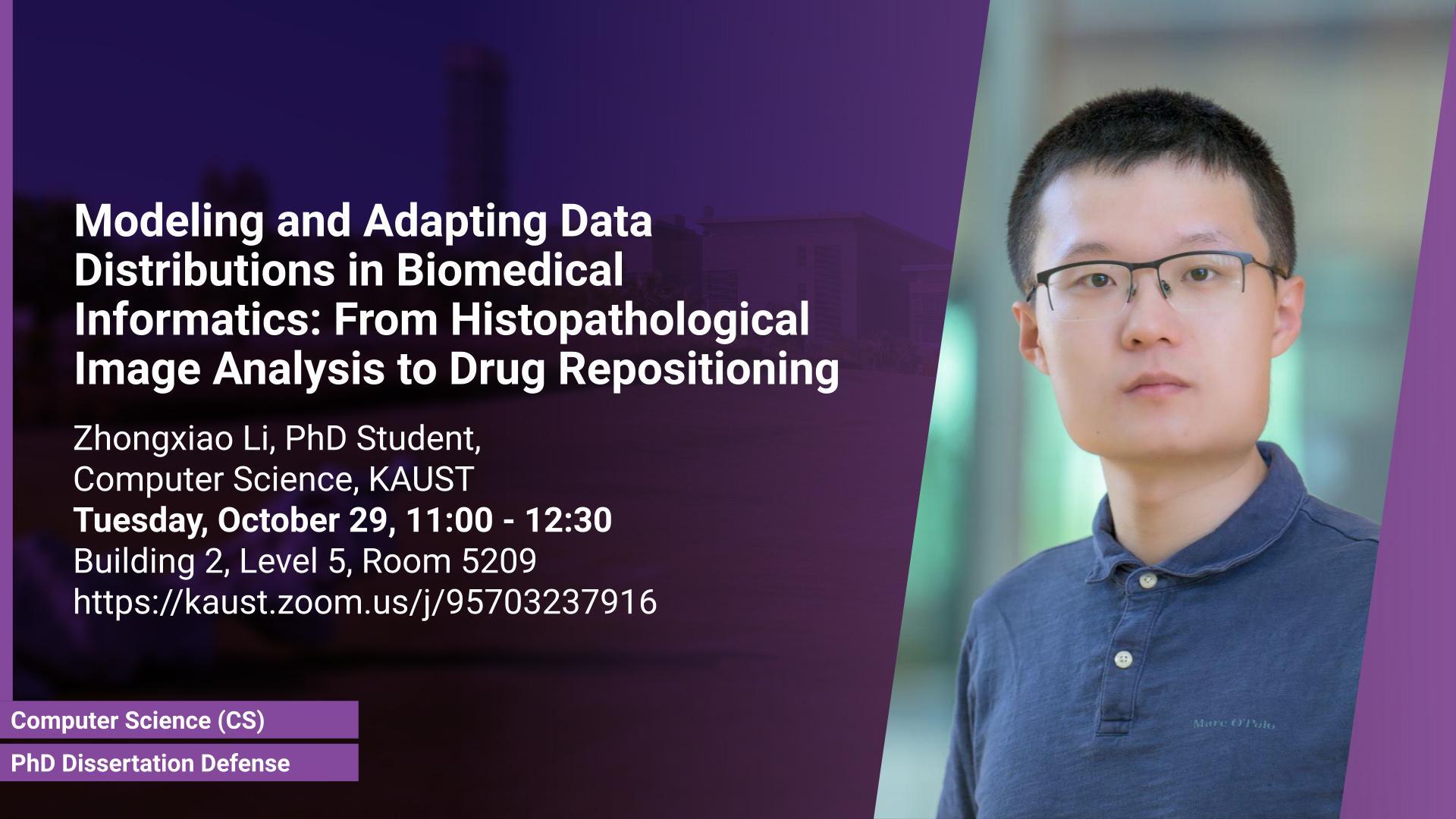Event Start
Event End
Location
Please click here to join the Zoom meeting.
Abstract
Modeling data distributions is a fundamental aspect of machine learning, encompassing both discriminative modeling, which focuses on building predictive models, and generative modeling, which aims to synthesize new data that mirrors existing distributions. This thesis presents three examples of discriminative and generative modeling in the biomedical domain, specifically in histopathological image analysis and gene expression profiling. First, we introduce ViT-WSI, a weakly-supervised discriminative modeling approach for brain tumor histopathological images that enables the training of predictive models in a data-efficient manner. Next, we highlight His-MMDM, a generative modeling technique for histopathological images that can synthesize oncological histopathological images based on different categorical labels and genomics/transcriptomics profiles. Thirdly, we demonstrate DREDDA, a domain-adaptive discriminative modeling method designed to computationally repurpose existing drugs for breast cancer differentiation therapy. Through these examples, we emphasize not only the significance of modeling data distributions but also the need to adapt models to varying distributions depending on the specific application. Finally, we discuss future directions for discriminative and generative modeling of biomedical data, emphasizing that adapting data distributions under different application scenarios will remain a crucial area of research.
Brief Biography
Zhongxiao Li is a Ph.D. student in Computer Science under the supervision of Professor Xin Gao at the Structural and Functional Bioinformatics Group (SFB) at King Abdullah University of Science and Technology (KAUST). Zhongxiao's research interests focus on computational biology and bioinformatics. Specifically, this includes developing deep learning methods for the discriminative and generative modeling of histopathological images, gene regulation, and biological sequences.
